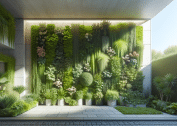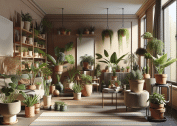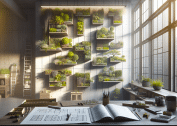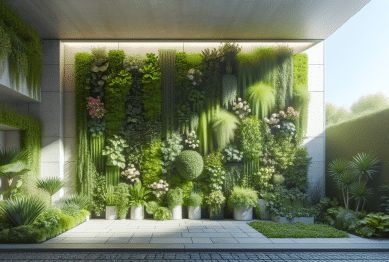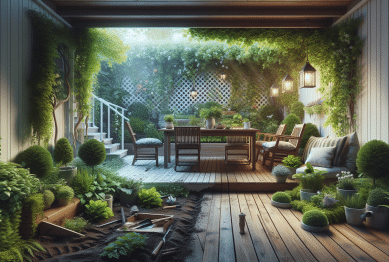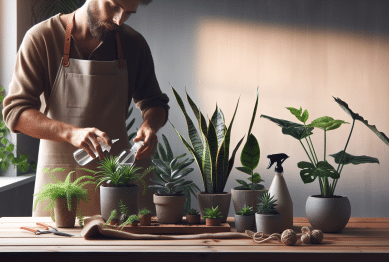In urban environments, where space is limited, gardening can seem like a challenging task. However, with the right techniques, tools, and plant choices, it’s entirely possible to create a flourishing garden, even in a small city apartment or on a tiny balcony. The demand for small-space gardening has surged in recent years as people increasingly seek ways to incorporate nature into their everyday lives.
This article explores the most effective gardening strategies for small urban spaces. Whether you’re working with a windowsill, a rooftop, or a small patio, the following tips and trends will help you grow a beautiful and productive garden that suits your lifestyle.
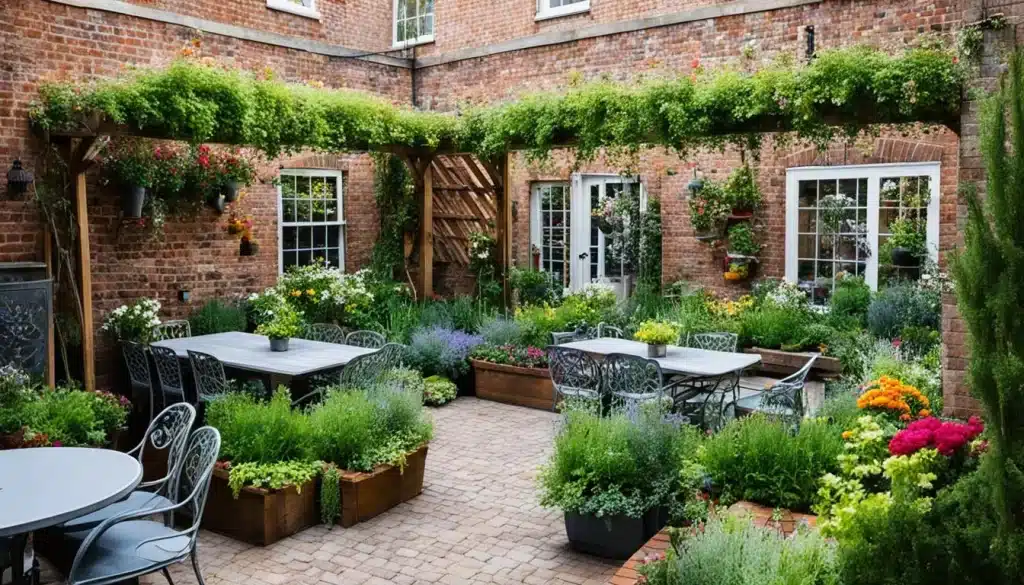
1. Container Gardening: Flexibility and Versatility
Container gardening is one of the most popular solutions for urban gardeners. By using pots, planters, and other containers, you can grow a wide variety of plants, from flowers to vegetables, without taking up precious ground space. Containers also allow you to easily move plants around to ensure they get the best light or to protect them from the elements.
Tips for Container Gardening:
- Choose the Right Container: Ensure the container has proper drainage to avoid waterlogging. Materials like terracotta, plastic, or metal are common choices.
- Size Matters: Select containers large enough to accommodate the plants’ root systems. Smaller pots are ideal for herbs and flowers, while larger ones are better for vegetables like tomatoes or peppers.
- Use High-Quality Soil: Invest in good-quality potting soil, which is light, well-draining, and rich in nutrients.
By using containers, you can mix and match plants, making it easy to experiment with various colors, textures, and plant types. Additionally, container gardening helps keep your urban space organized and aesthetically pleasing.
2. Vertical Gardens: Maximizing Vertical Space
Urban areas often lack expansive ground space for gardens, but this doesn’t mean you can’t grow a beautiful collection of plants. Vertical gardening has become increasingly popular as it allows gardeners to make the most of the available space by growing plants upward, rather than outward.
Ideas for Vertical Gardens:
- Vertical Planters and Wall-Mounted Shelves: Install shelves or trellises on walls or fences to hold potted plants.
- Hanging Gardens: Use hanging baskets or rail planters to add greenery without taking up valuable floor space.
- Green Walls: Consider installing a living wall system, where plants grow directly on the wall using a modular planting system.
Vertical gardening can be used for a variety of plants, including climbing vegetables like beans or cucumbers, flowers, and even herbs. This method not only maximizes space but also adds an interesting visual element to any small urban space.
3. Hydroponics: Soil-Free Gardening for Urban Spaces
For those with very limited space, hydroponics offers an innovative solution. This soil-free gardening method uses a nutrient-rich water solution to feed plants. Hydroponics is ideal for urban environments because it allows gardeners to grow crops in small, compact systems, such as countertop or tabletop units.
Benefits of Hydroponics:
- Space Efficiency: Since there’s no need for large garden beds, hydroponic systems can be placed almost anywhere.
- Faster Growth: Plants typically grow faster in a hydroponic system compared to traditional soil-based gardening due to the constant supply of nutrients and water.
- Less Maintenance: Hydroponics systems are often easier to maintain than traditional gardens, as they require less frequent watering and have fewer pest issues.
You can grow a wide range of plants in a hydroponic system, from leafy greens like lettuce to herbs such as basil and mint. Many urban gardeners are also using hydroponics to grow strawberries and even dwarf fruit trees in limited spaces.
4. Grow Your Own Herbs: A Simple, Yet Effective Approach
Herbs are a great choice for small urban gardens because they don’t require much space to thrive. They can be grown in containers or even on windowsills, making them perfect for apartments and smaller homes. Fresh herbs not only enhance your cooking but also add fragrance and color to your space.
Popular Herbs to Grow in Small Spaces:
- Basil
- Mint
- Thyme
- Rosemary
- Parsley
Herb gardens are low-maintenance and can be grown year-round, especially if you grow them indoors or in a sheltered outdoor spot. They also make excellent additions to vertical gardens or hanging planters.
5. Edible Gardens: Growing Your Own Food in the City
Edible gardening is a growing trend among urban gardeners who are looking for more sustainable ways to source their food. With the right tools and techniques, you can grow vegetables, fruits, and even small trees in a small space.
Tips for Starting an Edible Garden:
- Start Small: Begin with easy-to-grow plants like tomatoes, lettuce, or radishes. These plants thrive in small spaces and can produce large yields.
- Use Raised Beds or Containers: Raised beds or large containers are ideal for growing vegetables in limited space. They also improve soil drainage and make gardening easier on your back.
- Choose Dwarf Varieties: For fruit trees or larger plants, opt for dwarf varieties. These are compact and can be grown in containers or small garden beds.
Growing your own food not only helps you save money but also connects you to your food in a meaningful way. Urban spaces are increasingly adopting the concept of food independence, and small-space edible gardening is an excellent way to support this movement.
6. Sustainable Gardening Practices: Eco-Friendly Trends
Urban gardeners are becoming more conscious of their environmental impact, and sustainable gardening practices are at the forefront of this movement. Many urban dwellers are opting for eco-friendly gardening methods that reduce waste, conserve water, and minimize chemical use.
Sustainable Gardening Tips:
- Use Rainwater Collection Systems: Install a rain barrel to collect rainwater for irrigation, reducing water bills and conserving precious resources.
- Compost: Start composting kitchen scraps and yard waste to create nutrient-rich soil for your plants.
- Go Organic: Avoid chemical fertilizers and pesticides. Opt for natural alternatives like organic compost, compost teas, or neem oil.
Sustainable gardening practices not only benefit the environment but also help create healthier urban spaces, making your small garden an eco-friendly sanctuary.
Conclusion
Gardening in small urban spaces is not only possible but can also be incredibly rewarding. Whether you are growing herbs on a windowsill, creating a vertical garden, or embracing hydroponics, there are countless ways to make the most of limited space. By incorporating sustainable gardening practices, you can also reduce your environmental footprint and contribute to a greener city.
The key is to start small, experiment, and find what works best for your unique urban environment. With these tips, you can create a beautiful, productive garden, no matter how small your space may be.
References
- Robinson, M. (2021). Vertical gardening: Maximizing space in small urban environments. Green Thumb Press. Available at: https://www.greenthumbpress.com (Accessed: 11 August 2025).
- Smith, J. (2022). Hydroponics for beginners: Growing plants without soil in urban spaces. Urban Gardeners. Available at: https://www.urbangardeners.com (Accessed: 11 August 2025).
- Thompson, A., & Lee, K. (2020). Sustainable gardening practices for city dwellers. Eco Urban Living. Available at: https://www.ecourbanliving.com (Accessed: 11 August 2025).


